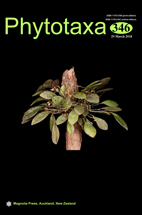Abstract
Itatiaia National Park (INP) is an interesting biogeographically location in southeastern Brazil, with a unique bryoflora due to its varied vegetation formations (montane forest, upper montane forest, and campos de altitude) and subtropical climate. The bryoflora of the INP consists of 519 species, 213 genera, and 81 families (289 mosses and 230 liverworts), with 84 taxa considered endemic, representing 34% of the total Brazilian bryoflora and 42% of the Atlantic Rainforest. Mosses and liverworts show very similar geographical distributions, with the most common phytogeographical patterns being Neotropical (219 taxa) and endemic (84 taxa). Endemism is concentrated in the montane forest for liverworts and in the upper montane forest for mosses. Comparative analyses between the bryoflora of INP and five tropical Andean countries (Bolivia, Peru, Ecuador, Colombia, and Venezuela) were used to confirm its affinities with the “páramos” phytophysiognomy. Sørensen similarity tests and cluster analysis were carried out on the similarity matrices for all families, genera, and species. Supporting evidence from published data was used to interpret the results. Comparisons made between the bryoflora of INP with those of five tropical Andean countries mentioned above showed strong familial, generic, and species similarities, which are explained in the literature by climatic similarities, speciation, long-distance dispersal, and migration through favorable habitats. At least 40% of the bryoflora species are shared between INP and the other tropical Andean countries, despite their vast size differences. We emphasize the need for adequate protection for the bryoflora of INP, specially its endemic and disjunct species, due to anthropogenic threats (tourism, incorrect trail maintenance, trampling, fire, litter, and construction) and global warming, which will accelerate the alteration of mountain environments.

